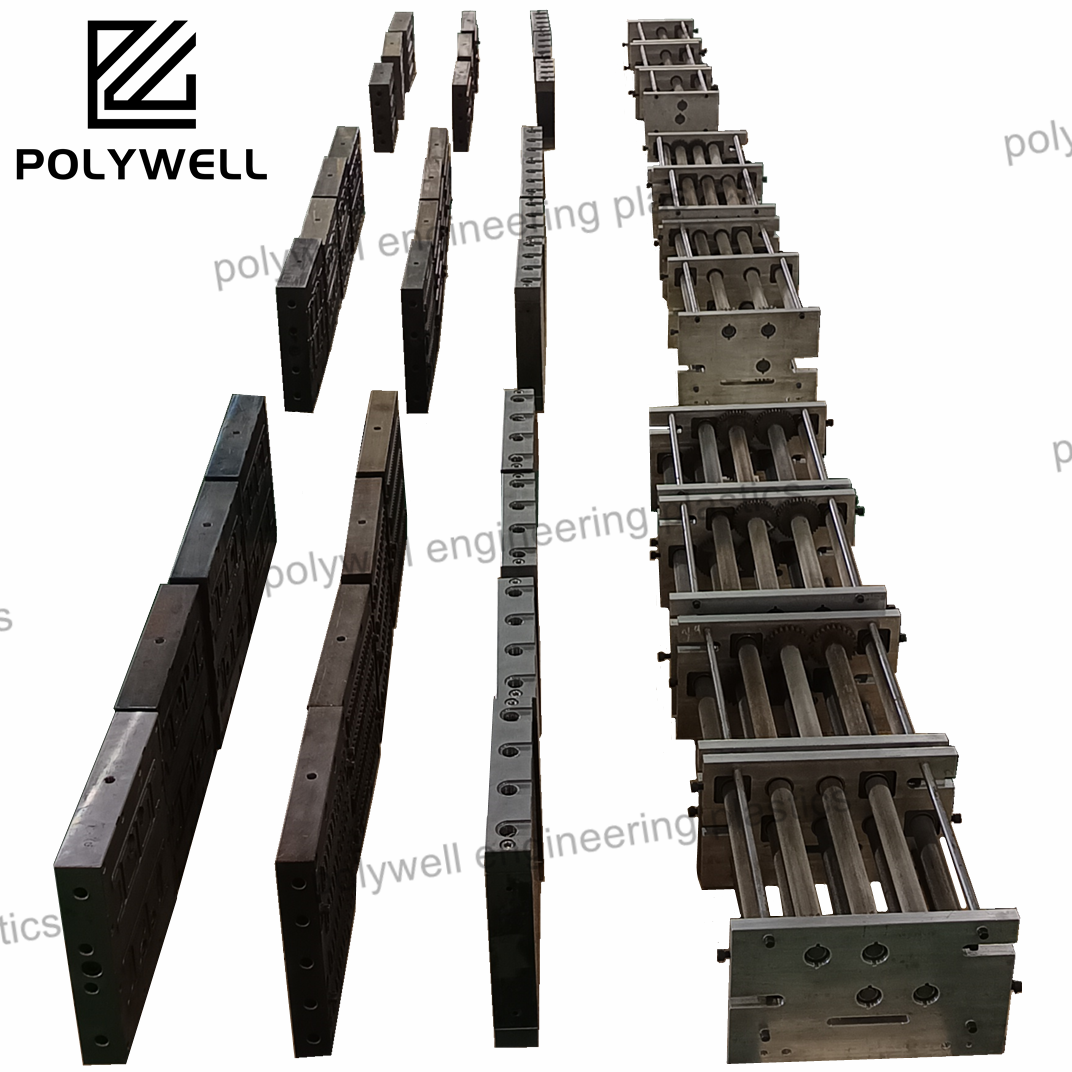
Extrusion molding is a relatively simple technique that is used to make countless products in our day to day lives. It is used by almost every manufacturer in order to force a specific material through a die in order to give it a specific shape. In a POLYWELL's case, they make use of extrusion molds in order to manufacture high performance thermal break strips through the use of a proprietary process. These thermal break strips also help in preventing heat transfer which is essential in increasing the energy efficiency of windows and doors. The added advantage of this is of course the precision provided by extrusion molding and thus allowing to meet the highest industry standards.
What is Extrusion Molding? The process is quite simple where such as rubber or a polymer is inserted into an extrusion machine and is then heated to a specific temperature. Once it reaches the required temperature, it is then forced through a die in order to make continuous profiles of a desired shape. POLYWELL often uses this technique for thermal break strips, as they have specific cross-sections.
What comes next is very crucial, selecting the right material to make the thermal break strips.A common practice around thermal break strips is utilizing materials with high durability and insulating capabilities. After the raw material has been sourced, it is then moved through a mold in an extrusion press which then creates the strips. After this, the strips are cut to the required length for the next processing steps.
Types of Extrusion Molds Used in Thermal Break Strip Production POLYWELL has a number of types of molds which serve the purpose of producing thermal break strips of the highest possible quality:
Bottom Molds: These molds are typically used to construct the core of the extrusion profile. Sufficient layers are added on top of the blank so the bottom mold subassembly will have an even amount of thickness throughout the blank. This is important in ensuring that the cross sectional geometry of the entire thermal break strip is well defined. Such a geometry will also help the fabricator during bonding the thermal break strip to the aluminum section.
Injection Molds: There are instances when injection molding is done together with extrusion molding. The use of injection molds makes it possible to introduce certain materials into the thermal break strip in order to improve its performance by reinforcing some areas or layers of the strip.
Cold Molds: In order to maintain the shape of the extruded material and prevent wastage hot air is released from the extruded material by making use of cold molds. Bringing the thermal break strips to POLYWELL enables the extrusion of the thermal break strips while avoiding any destruction of the shape.
Advantages of Extrusion Molding for Thermal Break Strips There are several advantages attributed to the use of extrusion molds when producing thermal break strips.
Consistency: The nature of the material and the volumetric properties of the thermal break strip are important in extruding the thermal break strip so as to be able to have the cool attachment of the finished thermal break strip.
Versatility: The thermal break strips extrusion molding process can be tailored easily to produce thermal break strips that can be of the desired widths, heights and materials for specific customers further requirements.
Cost Efficiency: Extrusion molding is unarguably the most economical production procedure because it minimizes the wastage and energy use compared to other forms of molding.
Customization: With POLYWELL’s extrusion molding technology, it is possible to produce thermal break strips with specific desired characteristics, e.g. increased insulation or improved weathering resistance.
The extrusion molds are a crucial component in the making of quality thermal break strips that enables POLYWELL’s products achieve the desirable performance and reliability levels in the industry. Investing in cutting-edge technology in extrusion molding machines, POLYWELL remains one of the best options in terms of providing solutions for building energy efficiency the world over.